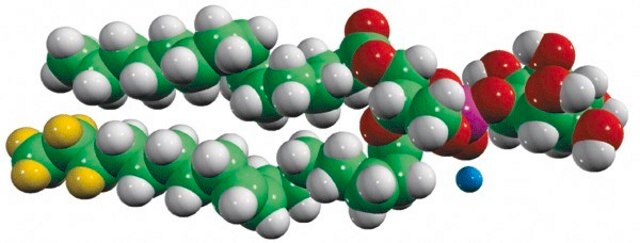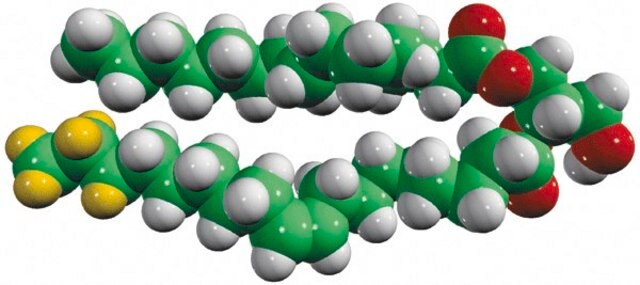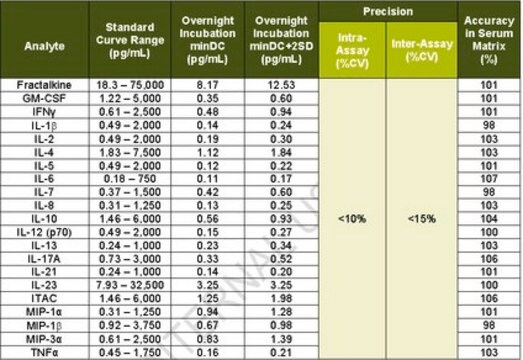Documenti fondamentali
850152P
Avanti
18:1 PI(5)P
1,2-dioleoyl-sn-glycero-3-phospho-(1′-myo-inositol-5′-phosphate) (ammonium salt), powder
Sinonimo/i:
PIP[5′](18:1/18:1)
About This Item
Prodotti consigliati
Saggio
>99% (TLC)
Forma fisica
powder
Confezionamento
pkg of 1 × 100 μg (with stopper and crimp cap (850152P-100ug))
pkg of 1 × 500 μg (with stopper and crimp cap (850152P-500ug))
Produttore/marchio commerciale
Avanti Research™ - A Croda Brand 850152P
Tipo di lipide
phospholipids
cardiolipins
Condizioni di spedizione
dry ice
Temperatura di conservazione
−20°C
Stringa SMILE
[H][C@@](COP([O-])(O[C@H]1[C@H](O)[C@@H](OP(O)([O-])=O)[C@H](O)[C@@H](O)[C@H]1O)=O)(OC(CCCCCCC/C=C\CCCCCCCC)=O)COC(CCCCCCC/C=C\CCCCCCCC)=O.[NH4+].[NH4+]
Categorie correlate
1 of 4
Questo articolo | HIFN-130K-PMX9 | HCYTA-60K-PX48 | HSTCMAG-28SK |
|---|---|---|---|
| Quality Level 200 | Quality Level 200 | Quality Level 200 | Quality Level 200 |
| technique(s) multiplexing: suitable | technique(s) - | technique(s) multiplexing: suitable | technique(s) multiplexing: suitable |
| shipped in wet ice | shipped in wet ice | shipped in - | shipped in wet ice |
| detection method fluorometric (Luminex® xMAP®) | detection method fluorometric (Luminex® xMAP®) | detection method fluorometric (Luminex® xMAP®) | detection method fluorometric (Luminex xMAP) |
| storage temp. 2-8°C | storage temp. 2-8°C | storage temp. 2-8°C | storage temp. - |
Descrizione generale
Applicazioni
Azioni biochim/fisiol
Confezionamento
Note legali
Comunemente ordinati con questo prodotto
Codice della classe di stoccaggio
11 - Combustible Solids
Certificati d'analisi (COA)
Cerca il Certificati d'analisi (COA) digitando il numero di lotto/batch corrispondente. I numeri di lotto o di batch sono stampati sull'etichetta dei prodotti dopo la parola ‘Lotto’ o ‘Batch’.
Ti serve un CdA esemplificativo?
Questo è un Certificato d’Analisi (CdA) campione; esso potrebbe non essere rappresentativo di un lotto di prodotto recente.
Possiedi già questo prodotto?
I documenti relativi ai prodotti acquistati recentemente sono disponibili nell’Archivio dei documenti.
Il team dei nostri ricercatori vanta grande esperienza in tutte le aree della ricerca quali Life Science, scienza dei materiali, sintesi chimica, cromatografia, discipline analitiche, ecc..
Contatta l'Assistenza Tecnica.












